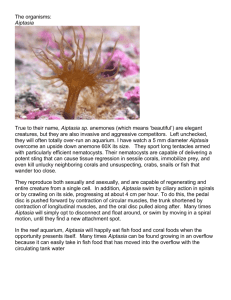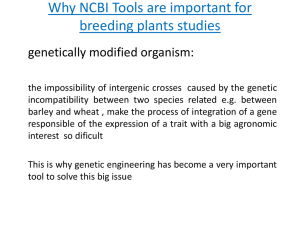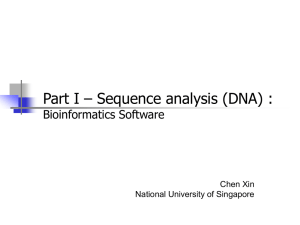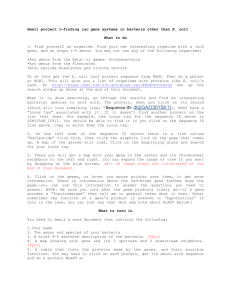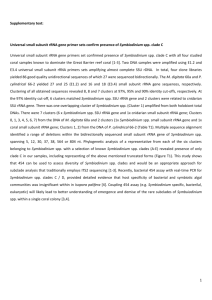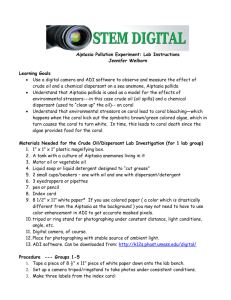Bioinformatic Analysis: Designing primers and annotation gene of
advertisement
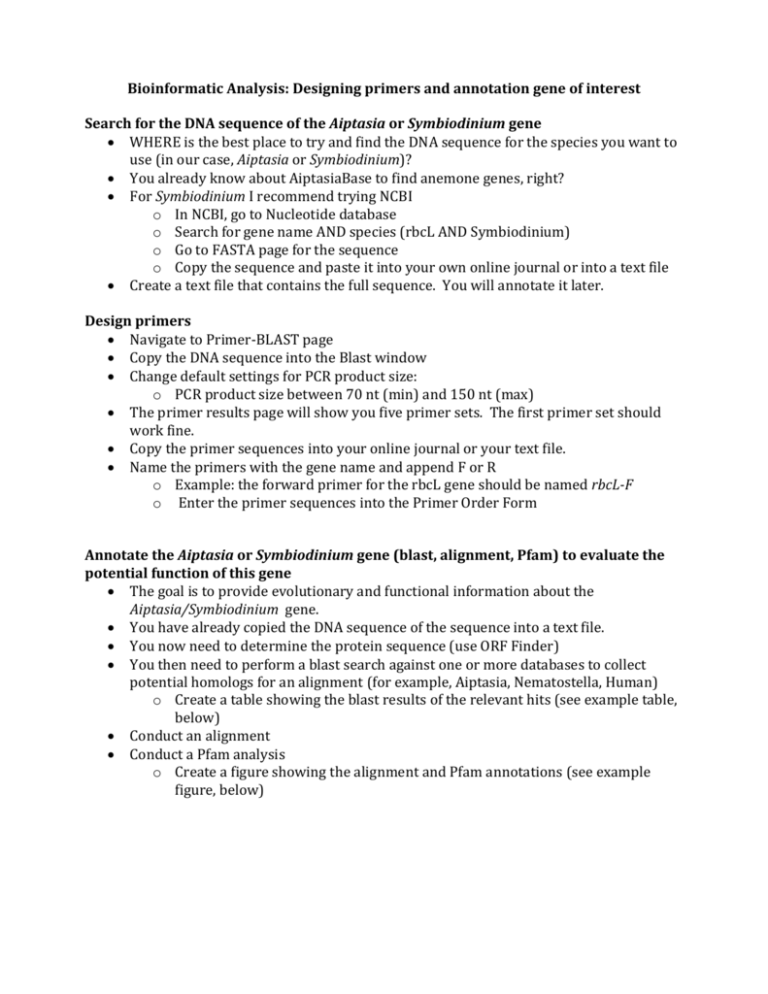
Bioinformatic Analysis: Designing primers and annotation gene of interest Search for the DNA sequence of the Aiptasia or Symbiodinium gene WHERE is the best place to try and find the DNA sequence for the species you want to use (in our case, Aiptasia or Symbiodinium)? You already know about AiptasiaBase to find anemone genes, right? For Symbiodinium I recommend trying NCBI o In NCBI, go to Nucleotide database o Search for gene name AND species (rbcL AND Symbiodinium) o Go to FASTA page for the sequence o Copy the sequence and paste it into your own online journal or into a text file Create a text file that contains the full sequence. You will annotate it later. Design primers Navigate to Primer-BLAST page Copy the DNA sequence into the Blast window Change default settings for PCR product size: o PCR product size between 70 nt (min) and 150 nt (max) The primer results page will show you five primer sets. The first primer set should work fine. Copy the primer sequences into your online journal or your text file. Name the primers with the gene name and append F or R o Example: the forward primer for the rbcL gene should be named rbcL-F o Enter the primer sequences into the Primer Order Form Annotate the Aiptasia or Symbiodinium gene (blast, alignment, Pfam) to evaluate the potential function of this gene The goal is to provide evolutionary and functional information about the Aiptasia/Symbiodinium gene. You have already copied the DNA sequence of the sequence into a text file. You now need to determine the protein sequence (use ORF Finder) You then need to perform a blast search against one or more databases to collect potential homologs for an alignment (for example, Aiptasia, Nematostella, Human) o Create a table showing the blast results of the relevant hits (see example table, below) Conduct an alignment Conduct a Pfam analysis o Create a figure showing the alignment and Pfam annotations (see example figure, below) Example Table showing BLAST results: A B Figure 1. This is a made-up figure showing the bioinformatics annotation of my gene of interest. Panel A shows sequence homology revealed by alignment, and Panel B shows the presence of various functional domains in the Aiptasia protein.


